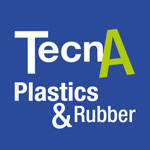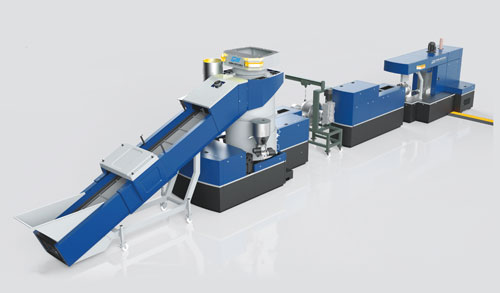 With Gamma Meccanica’s classic Tandem technology it is possible to recycle the most “difficult” plastic waste: Heavily printed, wet and highly contaminated
With Gamma Meccanica’s classic Tandem technology it is possible to recycle the most “difficult” plastic waste: Heavily printed, wet and highly contaminated
Since 1987, Gamma Meccanica has been designing and manufacturing plants and machines to recycle a wide range of plastic materials.
The consolidated experience and deep competence combined with a high level of technical solutions enable the company to meet the growing needs of international markets and to offer customized solutions for each customer. Whether it is industrial or post-consumer waste, GM lines can recycle both transforming the material into perfect granules for new uses.
Main types of GM plastic recycling lines
- Compact lines for the recycling and compounding of low bulk density materials with high residual moisture.
- Tandem Lines for the recycling of heavily printed, highly contaminated materials, with high residual moisture.
- Conventional Lines with various dosing systems for the recycling of plastics that have been pre-sized or ground prior to processing.
Gamma Meccanica lines are characterized by high level of automation, maximum quality of the recycled product (granules) and improved energy savings.
Tandem PLUS technology
The new series of GM Tandem lines born to give more “added” value to waste materials is the result of constant evolution of technology.
With Gamma Meccanica’s classic Tandem technology it is possible to recycle the most “difficult” plastic waste: heavily printed, wet and highly contaminated. The ultimate Tandem PLUS line improves characteristics during the upcycling process, so it is ideal for the production of compounds from recycled materials for special applications. There are numerous advantages for customers with the possibility to obtain maximum quality of the recycled product (granules).
The regeneration and “upcycling” process can begin with a gravimetric dosing station to feed the materials in a more precise and accurate way to the COMPAC system which has the function of shredding and densifying the waste material to be recycled. From the COMPAC the material is pushed with constant flow from the feeding screw into the extruder. Connected to the first extruder is a self-cleaning screen changer installed to remove the contaminants present in the melted polymer. There is a melt pump to dose the material from the primary extruder to the secondary twin-screw. The high-performance vacuum system is installed for removal of up to 10 times more gas and humidity in the melted material compared to other systems. At this point, the polymer is “enriched” with master, carbonate and various additives inside the twin-screw extruder which allows the production of compounds directly from plastic waste. The upcycling process ends with the cutting of the melted material inside the TDA pelletizing system.
An example of the latest Tandem Plus line is a GM160 delivered to a one of the Italian customers. The complete system has an average production capacity of 1800 kg/h of LDPE-HDPE-PP-Compound. The first part of the line consists of COMPAC feeding system and a single-screw extruder GM 160/28D. The self-cleaning screen changer is connected to the first extruder to remove the contaminants present in the melted polymer. At the exit of the screen changer, the melt is “degassed” by the high-performance vacuum chamber to avoid defects in the granules such as “air bubbles”. At this point, the polymer is “enriched” with master, carbonate and various additives inside the twin-screw extruder. The fillers and additives are fed using a gravimetric dosing system. At the end of the twin-screw extruder is installed our TDA 6.0 water ring pelletizer.
Thanks to Gamma Meccanica’s Tandem PLUS lines recyclers or processors can recover this material with a 100% yield, without the additional drying and antioxidant process. The line can be used entirely, especially in cases of very “difficult” materials. The functioning of two extruders arranged in succession ensures a uniform granule composition. The process does not stress the material which, as confirmed by laboratory tests, does not degrade, nor requires the use of additives.
This composition grants a great flexibility, an excellent quality of the granule and energy saving.







